Enzyme & Microbial Encyclopedia
A
ANAEROBES
Organisms which requires oxygen-free conditions in which to live.
ARCHAEA
Domain of single-celled organisms which lack cell nuclei, making them prokaryotes.
A
ANTIMICROBIAL
A substance produced by one living organism that kills or inhibits the growth of another; destroying or inhibiting the growth of microorganisms and especially pathogenic microorganisms
B
BACTERIA
Small single-celled organisms. Bacteria are found almost everywhere on Earth and are vital to the planet’s ecosystems. Some species can live under extreme conditions of temperature and pressure. The human body is full of bacteria, and in fact is estimated to contain more bacterial cells than human cells.
BIOREACTOR
An apparatus in which a biological reaction or process is carried out, especially on an industrial scale.
A
BIOACTIVE
Having or producing an effect on a living organism, tissue or cell.
C
CARRIER
A substance used to support or convey another substance such as a pigment, catalyst, or radioactive material.
COLONIZATION
The process in biology by which a species spreads to new areas.
CYTOKINE
A broad and loose category of small proteins important in cell signaling.
A
CFU (COLONY FORMING UNITS)
A unit which estimates the number of microbial cells (bacteria, fungi, viruses etc.) in a sample that are viable, able to multiply under the controlled conditions.
COMMENSAL
A long-term biological interaction in which members of one species benefits, while those of the other species do not benefit or are not harmed.
D
DEEP TANK FERMENTATION
An aseptic process for growing large quantities of microorganisms which require oxygen for survival.
A
DYSBIOSIS
An imbalance between the types of organism present in a person’s natural microflora, especially that of the gut.
E
ENDOTHELIAL CELL
Single cell layer that lines all blood vessels and regulates exchanges between the bloodstream and the surrounding tissues.
ENZYME
A substance produced by a living organism which acts as a catalyst to bring about a specific biochemical reaction.
A
ENUMERATION
The action of establishing the number of something.
EPITHELIAL CELL
These cells are a thin, continuous, protective layer of compactly packed cells with a little intercellular matrix, which help to protect or enclose organs.
F
FERMENTATION
The chemical breakdown of a substance by bacteria, yeasts, or other microorganisms, typically involving effervescence and the giving off of heat.
A
FREEZE DRY
Preserving something by rapidly freezing it and then subjecting it to a high vacuum.
G
GENETIC SEQUENCING
The process of ascertaining the sequence of nucleotides in a segment of DNA.
GENUS
A principal taxonomic category that ranks above species and below family, and is denoted by a capitalized Latin name, e.g. Leo.
A
GENOMICS
The branch of molecular biology concerned with the structure, function, evolution, and mapping of genomes.
GUT BARRIER
The property of the intestinal mucosa that ensures adequate containment of undesirable luminal contents within the intestine while preserving the ability to absorb nutrients.
I
IN VITRO
A process performed or taking place in a test tube, culture dish, or elsewhere outside a living organism.
INFLAMMATORY MARKER
Blood tests used by doctors to detect inflammation in the body, caused by many diseases.
A
IN VIVO
A process performed or taking place in a living organism.
K
KOJI
Cooked rice and/or soya beans that have been inoculated with a fermentation culture, Aspergillus oryzae. This naturally occurring culture is particularly prevalent in Japan.
A
M
METABOLITES
A substance formed in or necessary for metabolism.
MICROBIOTA
The microorganisms of a particular site, habitat, or geological period.
A
MICROBIOME
The combined genetic material of the microorganisms in a particular environment.
MUCUS/MUCOSA
A slimy substance secreted by membranes and glands for lubrication, protection, etc.
P
PARABIOTICS
Inactivated microbial cells (non-viable) that confer a health benefit to the consumer.
PERSISTENCE
In probiotic bacteria, this means the length of time bacteria can be found within or on a body after contact or consumption.
PREBIOTICS
Compounds in food that foster growth or activity of beneficial microorganisms such as bacteria and fungi. The most common environment considered is the gastrointestinal tract.
PROTIST
Any eukaryotic organism that is not an animal, land plant, or fungus. Protists do not form a natural group, or clade, but are a polyphyletic grouping of several independent clades that evolved from the last eukaryotic common ancestor.
A
PATHOGEN
A bacterium, virus, or other microorganism that can cause disease.
POSTBIOTICS
Soluble factors, secreted by live bacteria or released after bacterial cell disintegration, providing physiological benefits to the host.
PROBIOTICS
Live microorganisms promoted with claims that they provide health benefits when consumed, generally by improving or restoring the gut microbiota.
Q
QUORUM SENSING
The ability to detect and respond to cell population density by gene regulation.
A
S
SCFA (SHORT CHAIN FATTY ACIDS)
Fatty acids of two to six carbon atoms. The SCFAs lower limit is interpreted differently, either with 1, 2, 3 or 4 carbon atoms. Derived from intestinal microbial fermentation of indigestible foods. SCFAs in human gut are acetic, propionic and butyric acid.
SOLID STATE FERMENTATION
A fermentation process in which a solid nonsoluble material is used, which acts as a physical support as well as a nutrient source for the growth of microorganisms. The technique involves growth of microorganisms on porous particulate media with low moisture content in Petri plates, conical flasks, etc.
SPORE COAT
The thick layer found beneath the perispore of some eukaryotic spores and bacterial mature spores.
STABILITY
Survivability under certain conditions, such as climate or length of time on a shelf.
SOLUBILITY
The ability of a substance to form a solution with another substance.
SYNBIOTICS
Mixtures of probiotics (helpful gut bacteria) and prebiotics (non-digestible fibers that help these bacteria grow).
A
SPECIES
Probiotic bacteria are classified as Genus – Species – Strains, i.e. Bacillus is the genus, subtilis is the species and the number after it is the strain code. Knowing the “species” helps to more closely identify the specific characteristics of the bacteria genus.
SPORE
(In bacteria) a rounded resistant form, not sensitive to heat, moisture or aerobic conditions, adopted by a bacterial cell in adverse conditions.
SPRAY DRY
A method of forming a dry powder from a liquid or slurry by rapidly drying with a hot gas.
STRAIN
The last part of the bacterial family tree, defined under a species. I.e. Species: Bacillus Genus: Subtilis Strain: 08-74
SYMBIOSIS
Interaction between two different organisms living in close physical association, typically to the advantage of both.
T
TAXONOMY
The branch of science concerned with classification, especially of organisms.
A
W
WATER ACTIVITY
Partial vapor pressure of water in a solution, divided by the standard state partial vapor pressure of pure water.
A
Y
YEAST
A microscopic fungus consisting of single oval cells that reproduce by budding, and are capable of converting sugar into alcohol and carbon dioxide.
A
Z
ZONULIN
A protein that increases the permeability of tight junctions between cells of the wall of the digestive tract.
A
Learn About Our Services
Let’s Develop Something Together
We’re as passionate as you are about scientific innovation that matters
Learn More
